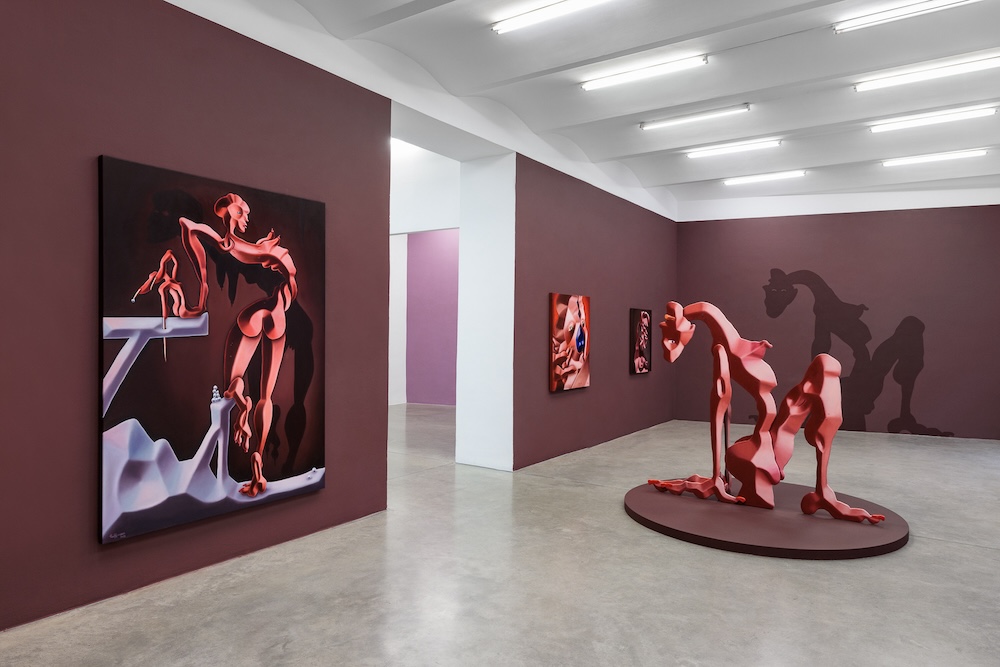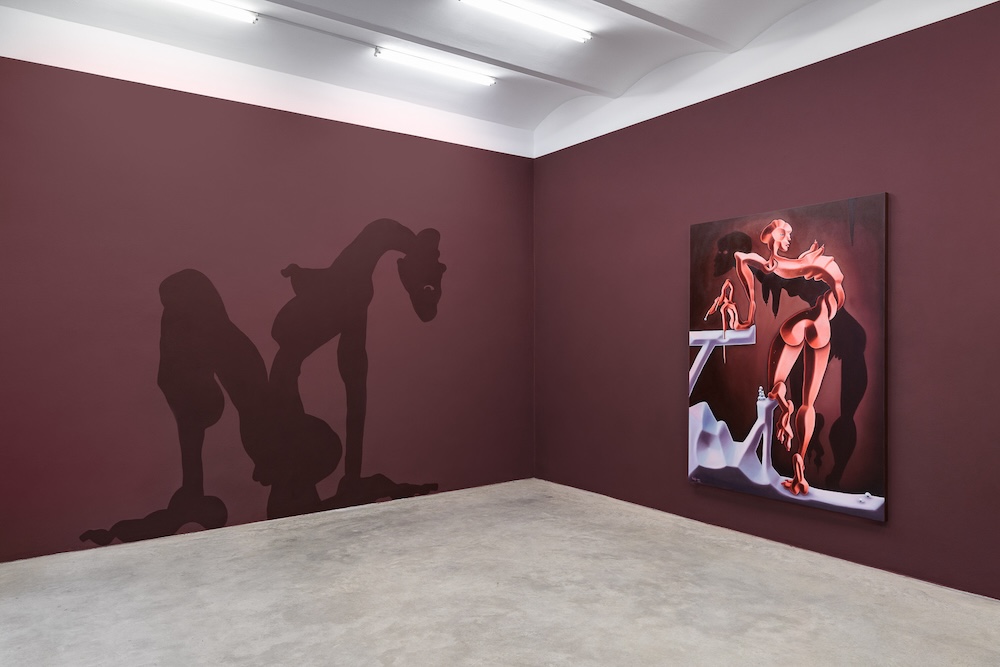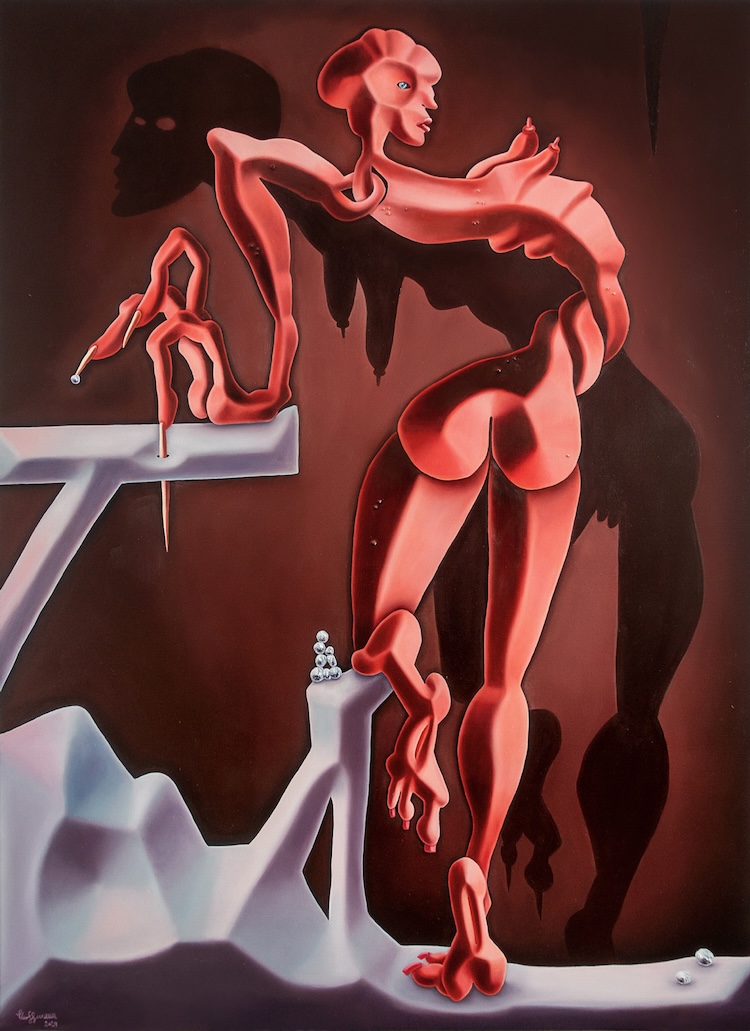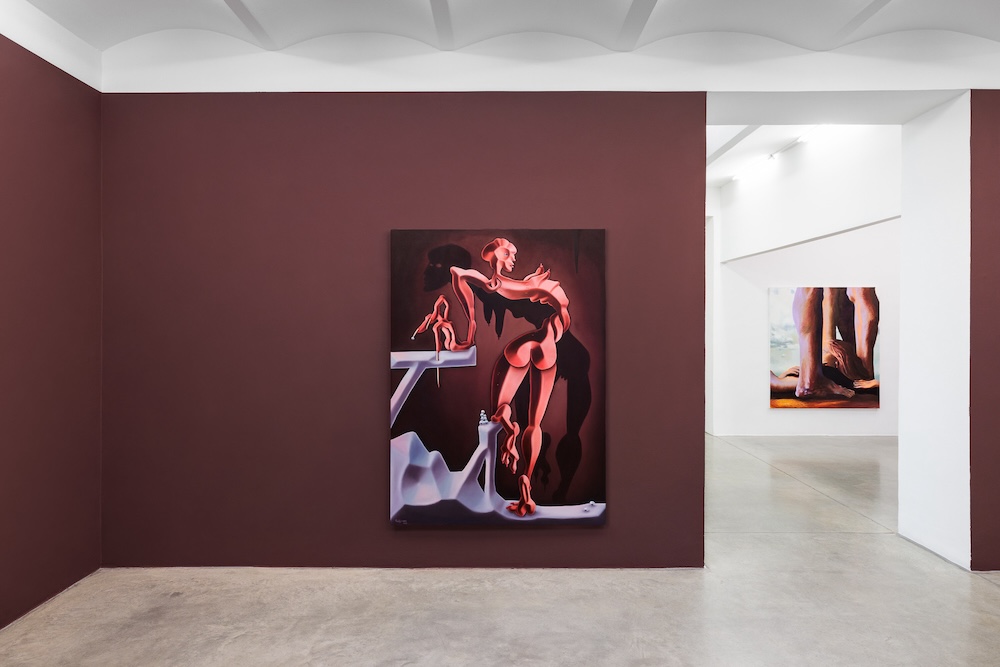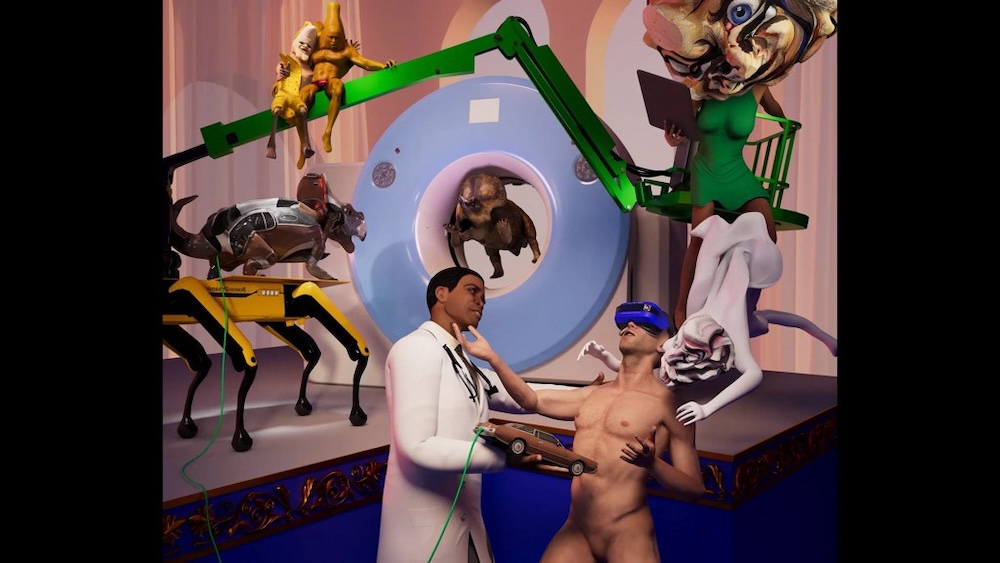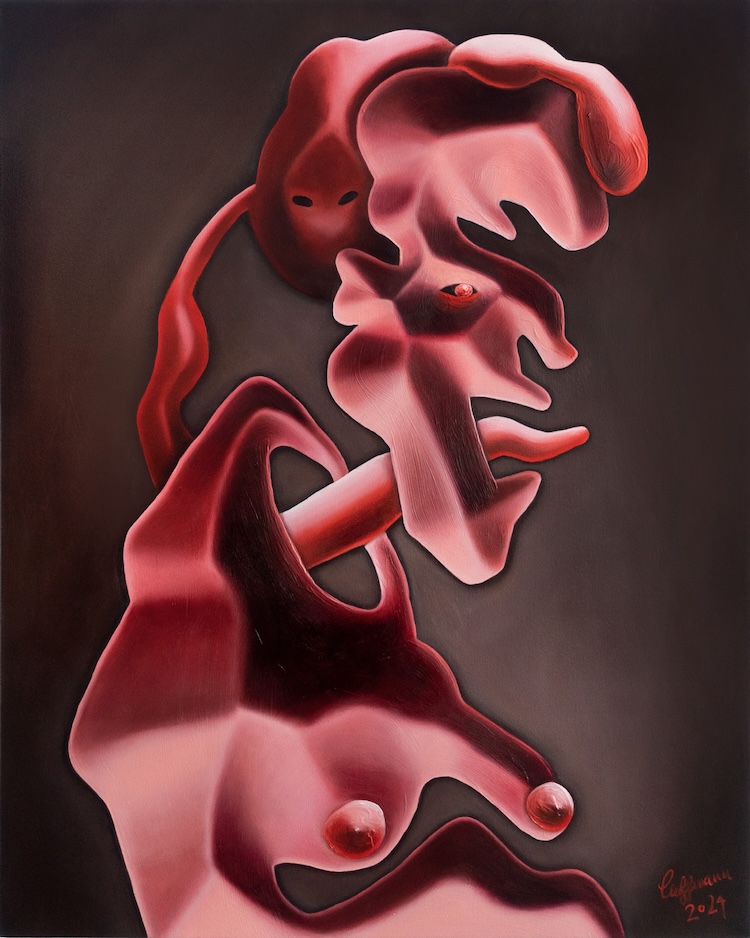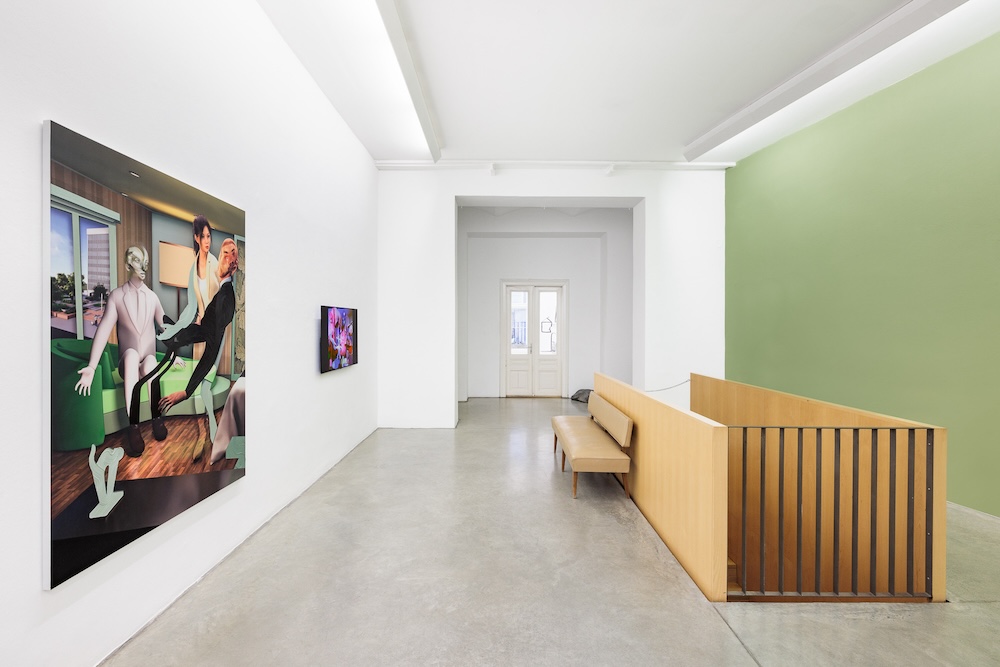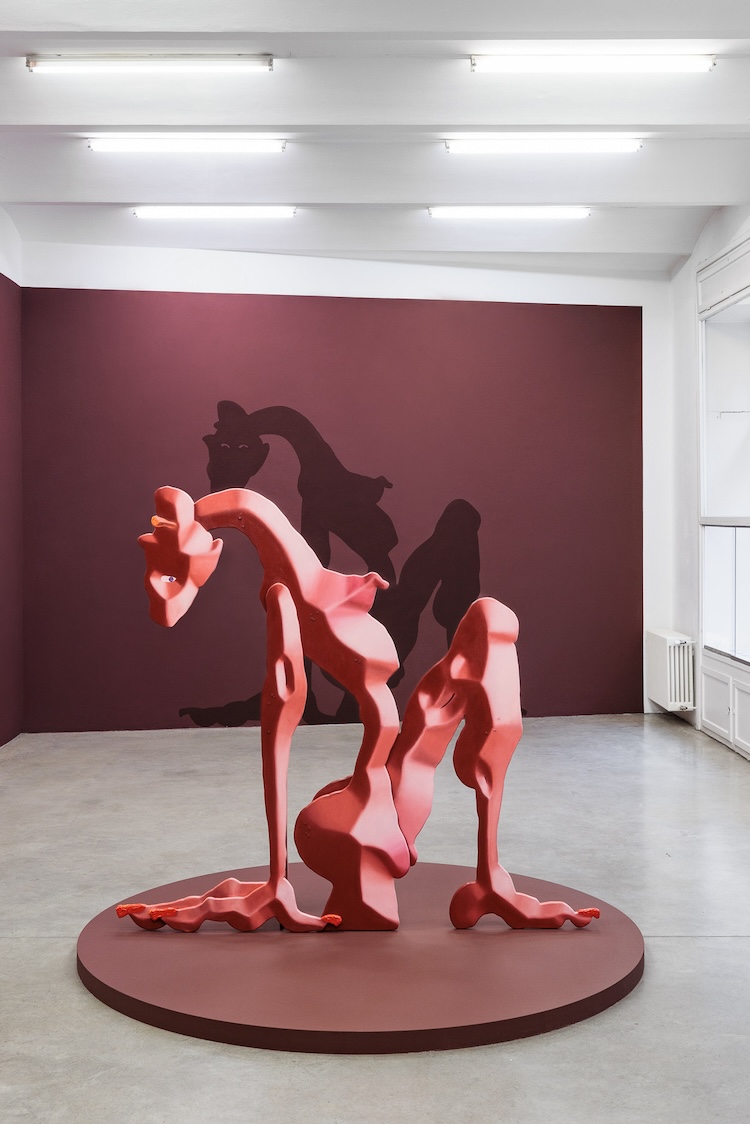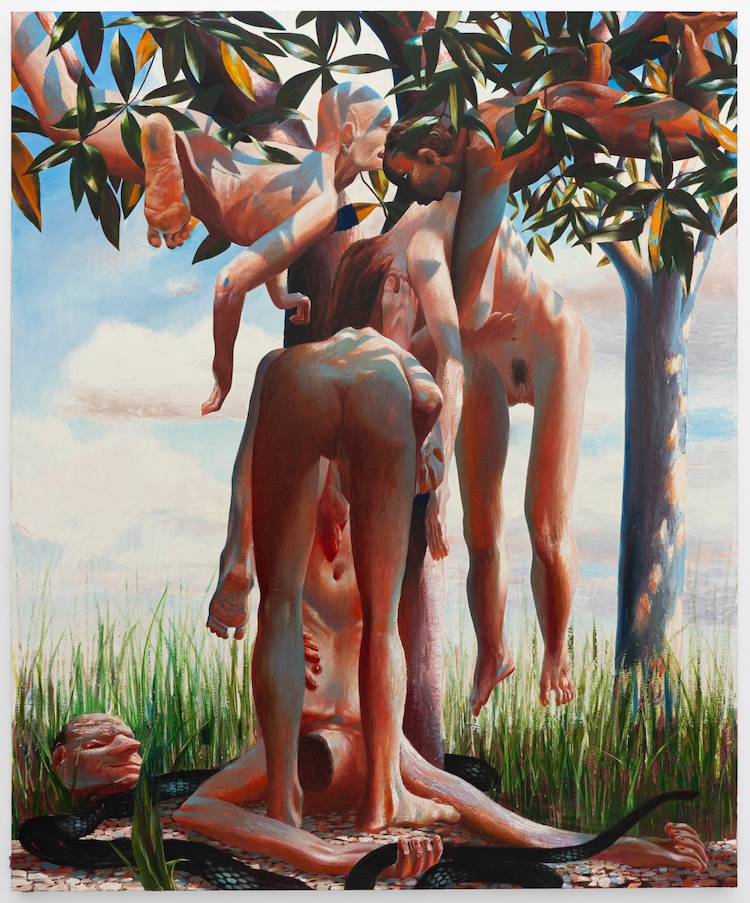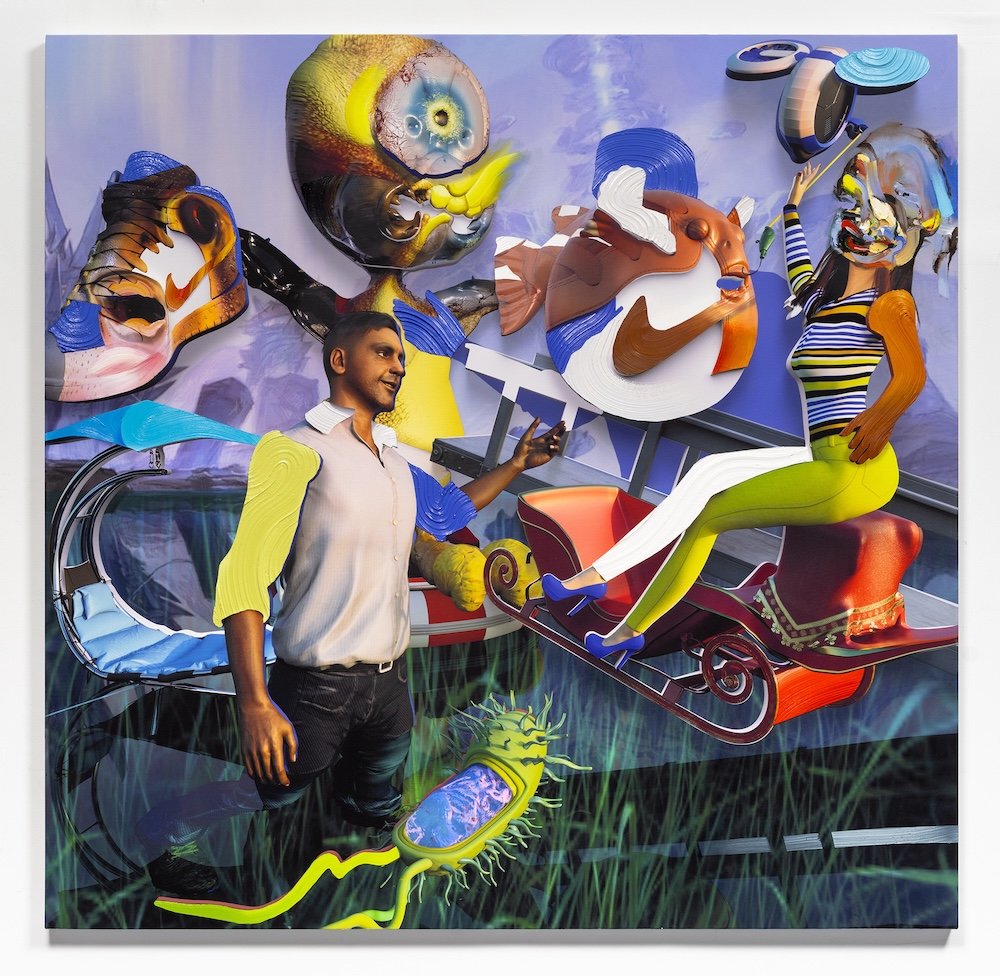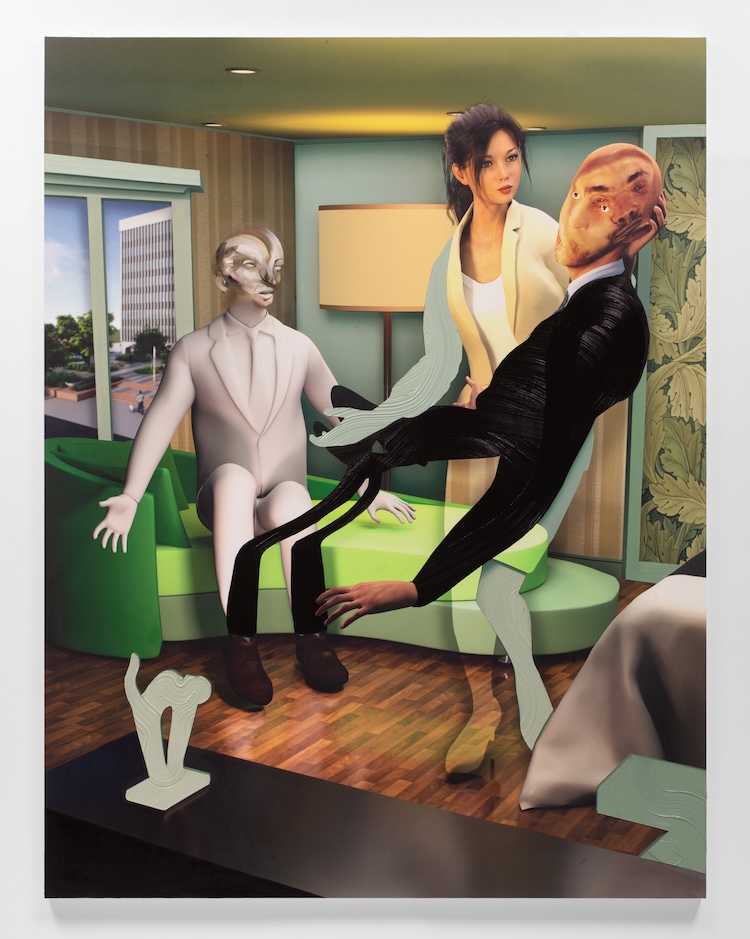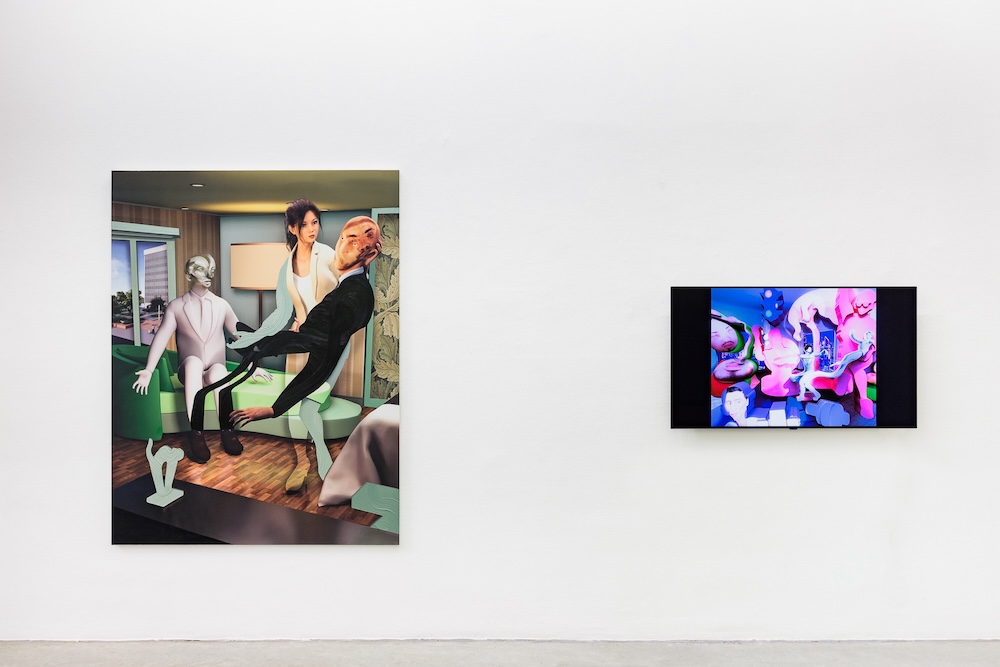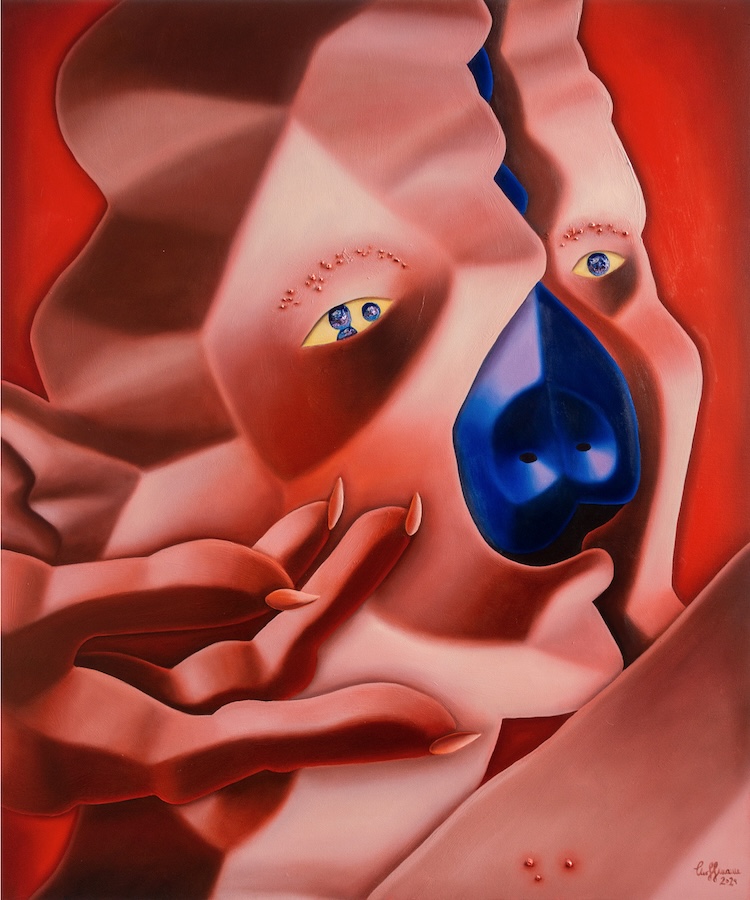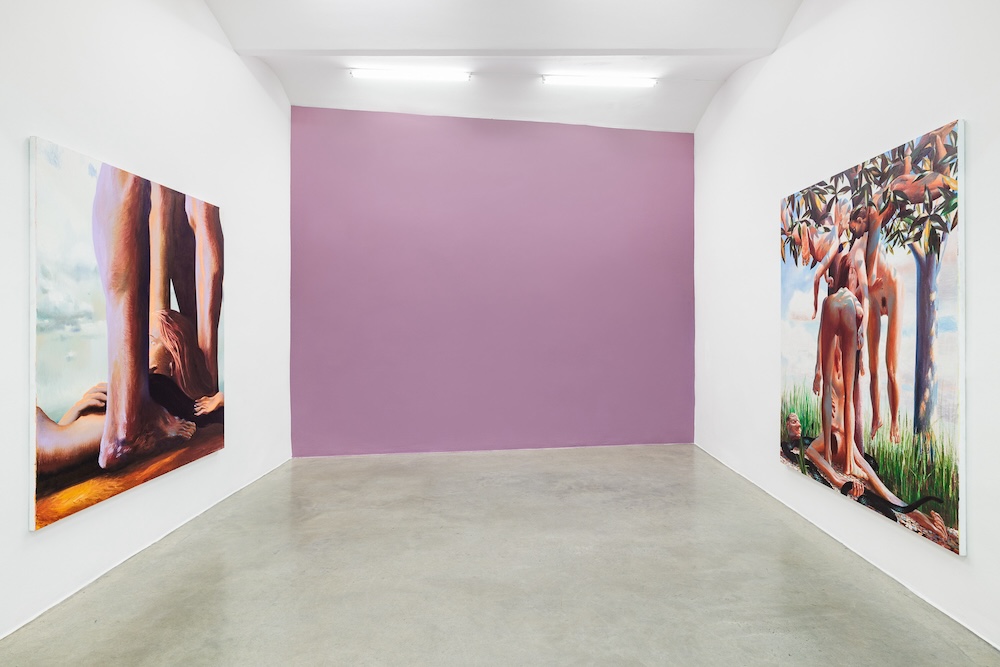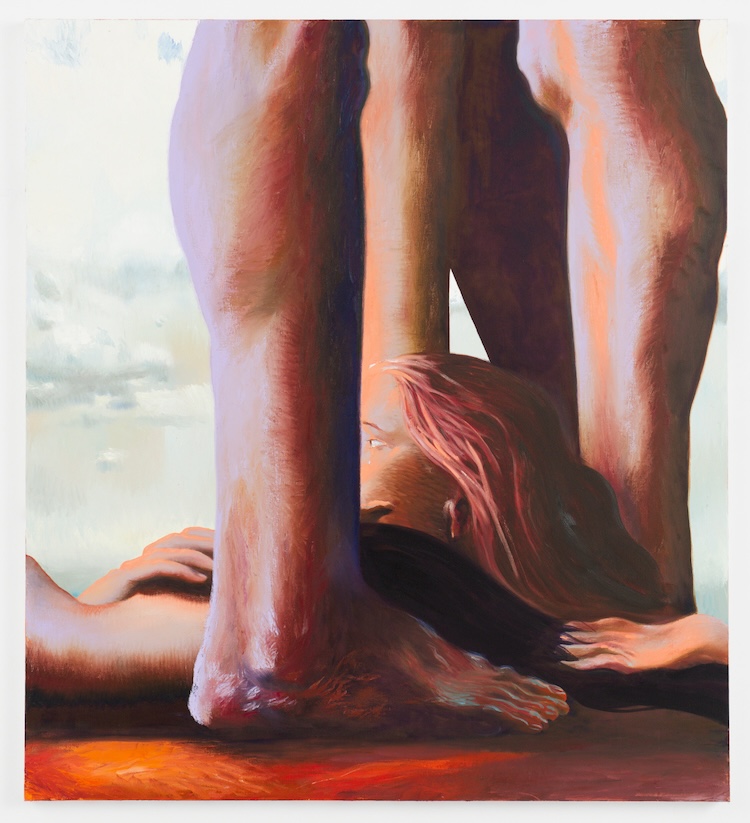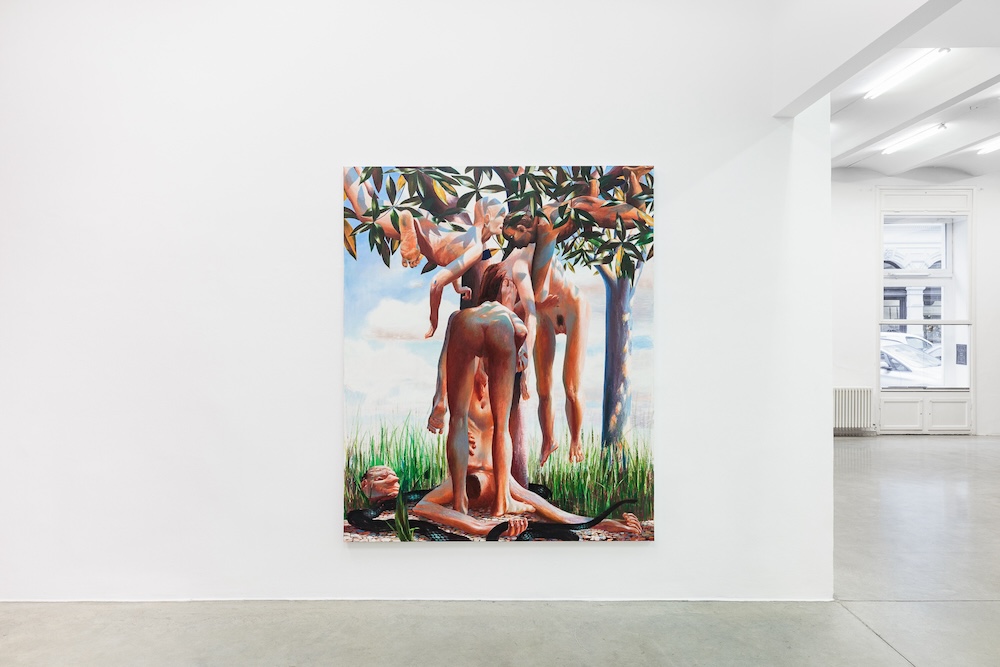Dreams are, at their core, a complex tapestry of emotions, memories and sensations that often lack the coherence of waking life. The inability to immediately rationalise the dream or separate its events from reality can create a pervasive sense of unease. If particularly strange and emotionally charged, an ephemeral echo often lingers on the threshold of our consciousness. there is something odd ... explores the precarious, strange relationship between traditional painting and computer generated images, which is similar to the interdependence of dreams and the waking state when questioning established dualisms as “real” and “virtual."
Cathrin Hoffmann's figures are digitally modelled and reproduced in analogue form, embodying questions of being human, humanity and the abstractedness of social interactions. Instrumentalising the repulsive, she activates creatures alien enough for us to maintain a certain emotional and perceptual detachment, yet human enough for us to empathise with. Thus, being more humanoid than anthropomorphic, Hoffmann’s sculptures infiltrate the three-dimensional space, drawing you closer, breaching the barrier between mind and matter, painting and sculpture, stranger and friend. A menacing aura lingers around their contorted carnal forms, reinforced by looming shadows of their elongated and sinuous morphologies. Feeding from reality, Hoffmann’s compositions subsist in matrices of liminality, making us question the contradictories of both identity and indiscernibility.
Experienced as a digression from the bodily realm, most dreams disregard all conjunctions, taking over and manipulate until we're left with a sense of humanized geometry; a transformation where the abstract becomes intimately personal. Laurent Proux approaches the human form with fragmentation and silhouettes, operating an equivocal domain in which dualisms are replaced by fluidity. Sensual and violent, often disturbing while sometimes sentimental, Proux’s figures unclose an altered legibility of iconography by decrypting the logical structures of paradoxes. He continuously explores pictorial solutions by composing from a variety of materials, then painting as if he were collaging, aiming to connect singular elements to create a dialectical tension from which his images emerge.
To make sense of what we experience, it is necessary to organise incoming sensations into meaningful information. Pieter Schoolwerth works render our gaze hypermobile, frantically seeking to capture and comprehend everything that is depicted. By abstracting computer generated visual elements into an analogous form of painting, his compositions are sensory overload on canvas, endowed with a potential for movement and mobility that finds its outlet in the form of videos. Reflecting the destabilized construction of identity in times characterized by increasingly abstract social relations with others and with oneself, Schoolwerth generates visual worlds that effortlessly follow their own set of rules: Traditional categories of form and content are becoming obsolete through reorganized hierarchies.
Each of the works on display therefore exists in its own unique way in a realm where the familiar and the surreal merge, and the tangible and the intangible intersect. there is something odd ... therefore opens up virtuality as more than just excerpts of life, but as of equal importance to what we have come to perceive as reality. —Teresa Kamencek
https://christinekoeniggalerie.com/

